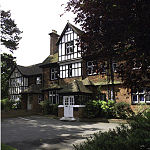Greenacre School for Girls
Greenacre School for Girls was an independent girls' school, founded in 1933, in Banstead, Surrey, England, which closed in 2017.It was inspected by the Independent Schools Inspectorate and was a member of the Girls' Schools Association. The governors of the school turned it over to United Learning in 2015.It closed in 2017, at the end of the academic year. The site is now used for the new independent and co-educational Banstead Preparatory School, which opened in September 2017 with the merger of Greenacre School for Girls, Priory School, and Bramley School in Banstead, Surrey. The new school is on the former Greenacre site, for pupils aged from 2 to 11. Pupils in Greenacre Junior School will transferred to the new school, and pupils in the Senior School were guaranteed places at other local schools. Banstead Preparatory School is run by United Learning.
Excerpt from the Wikipedia article Greenacre School for Girls (License: CC BY-SA 3.0, Authors).Greenacre School for Girls
Sutton Lane, Reigate and Banstead
Geographical coordinates (GPS) Address Phone number Website External links Nearby Places Show on map
Geographical coordinates (GPS)
| Latitude | Longitude |
|---|---|
| N 51.3297 ° | E -0.194 ° |
Address
Banstead Preparatory School
Sutton Lane
SM7 3RA Reigate and Banstead
England, United Kingdom
Open on Google Maps






